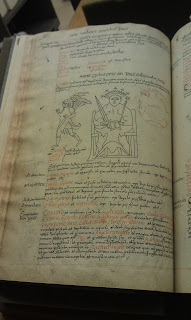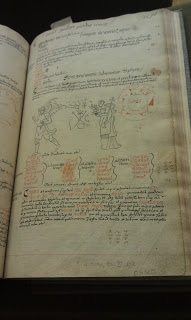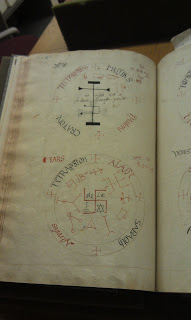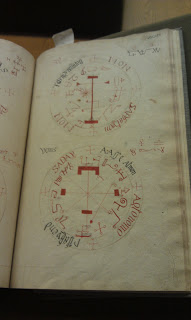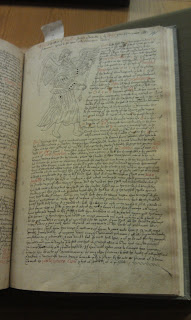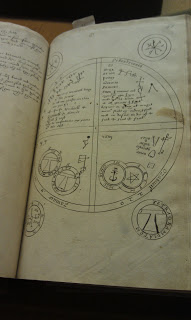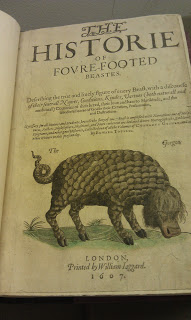Down, down, down we travel into the deepest floor of the vault, and there we find Alan Katz (hope I spelled his name correctly!) and Garland introduces me. “I’ve left quite a few comments on your blog,” he tells me. I wonder if he’s reading now? Hi, Alan! Let me know if I’ve spelled your name correctly!
Georgianna and Garland discuss what cool stuff we might see down here, and they confer with Alan. “Well,” he says, “There’s The Globe.” Georgianna agrees that this would indeed be cool. Garland has apparently never seen what we’re about to see, or has forgotten that they had it.
Alan disappears into the stacks and rolls out …
How cool is that! I actually got a picture of my kids all standing around it, like a doll house. I currently have a message in to Garland trying to learn more about this item – what time period it’s from, what was its purpose. But I knew that I had to include it in my photo tour whether I had the research or not.
Update, directly from Alan (who has promised to post more in comments as he finds it):
The Globe was patented by H. Ernest Conklin, of Roslyn, Long Island, born in 1892. He was a scholar at Cornell and Princeton and professor at Rice in the 1920’s. The model was built no later than 1935 and is on a 3/8”:1’ scale.
Funny story – at the end of our tour of the lowest levels, we travelled back up the elevator and Georgianna took a moment to show us just how heavy and secure the vault doors (yes, multiple doors) are. As she closes and locks the cage I whisper back down the hall, “Good night, Alan!” Turning to Georgianna I ask, “You do remember to feed him, right?”
Later, while we were at tea (a Folger tradition!) we saw that Alan had escaped. Garland had to share my joke with him. “That’s what the book lift is for,” he replied, “So they can send down my food.”



